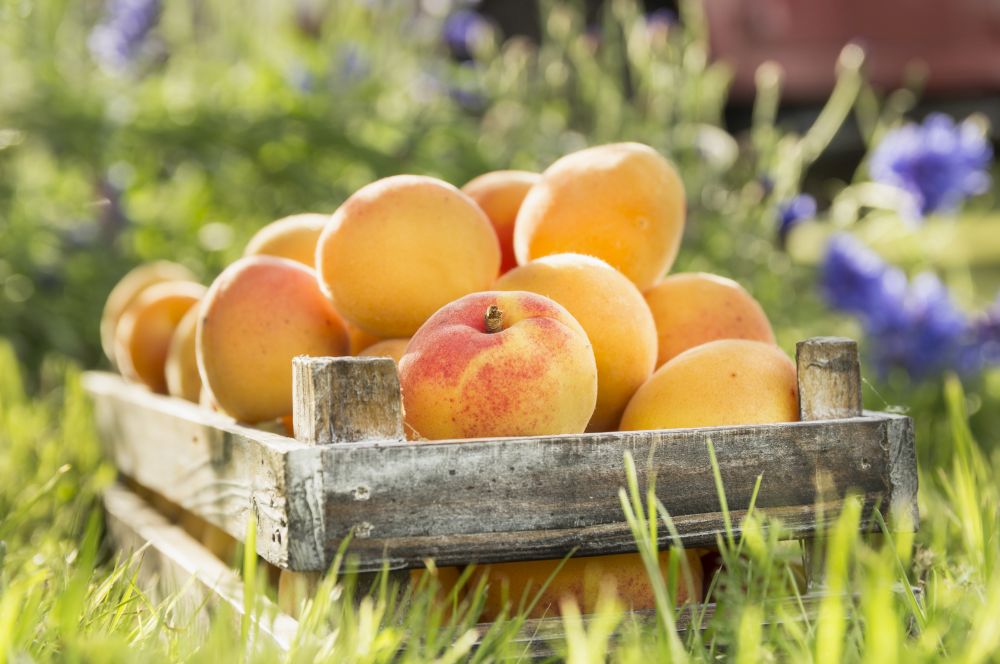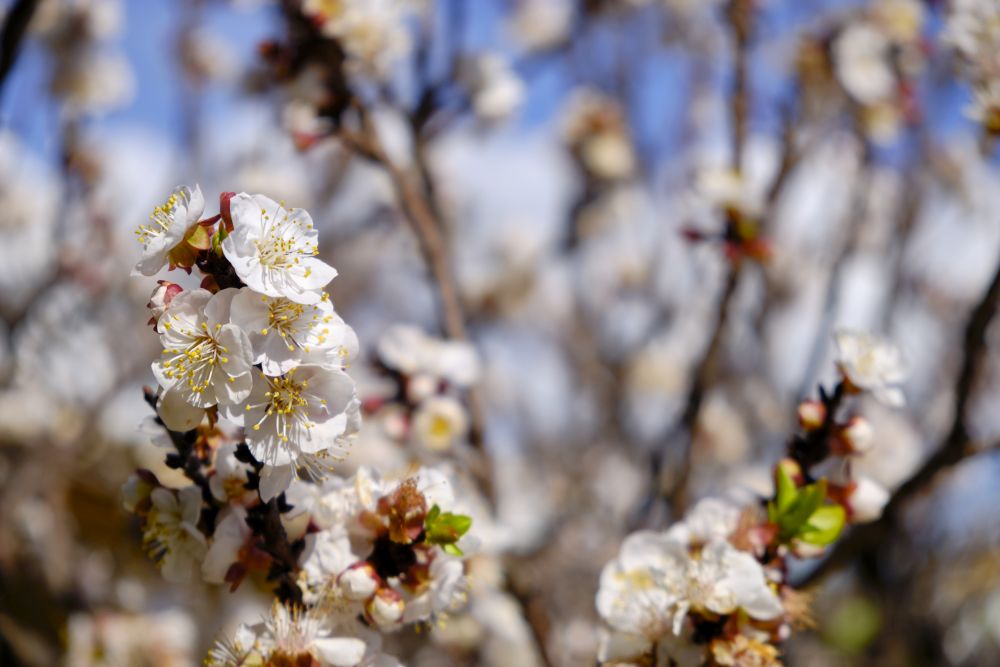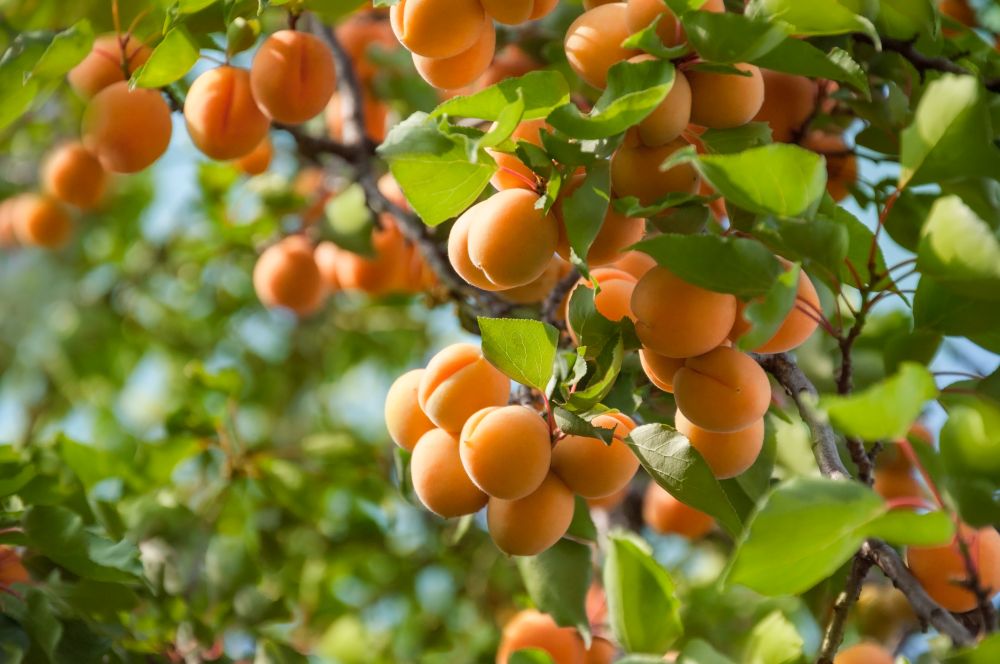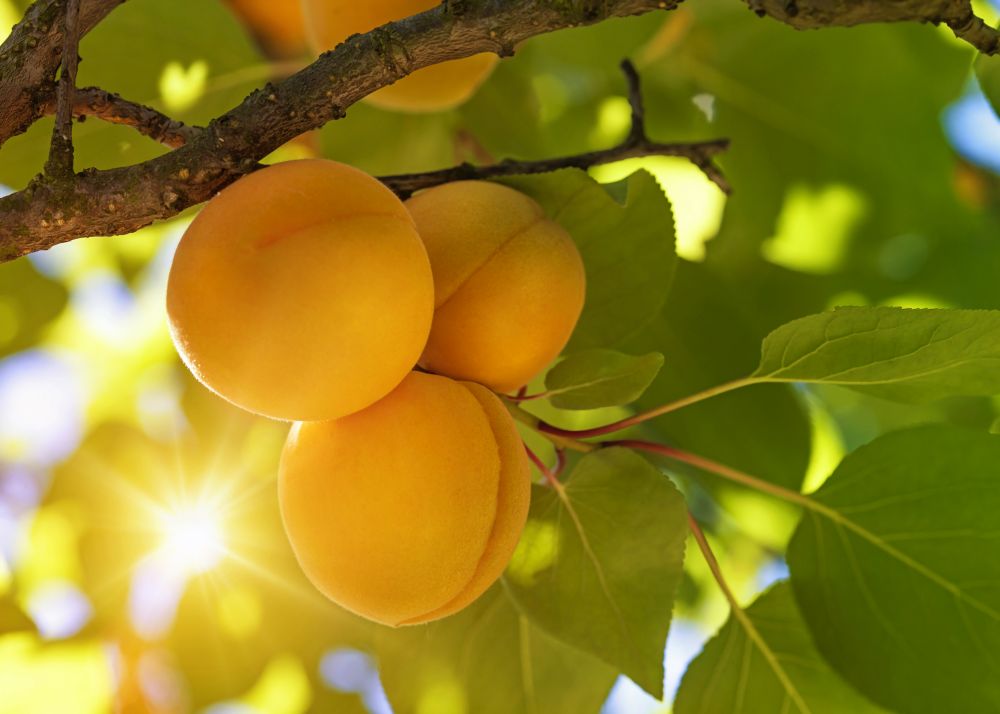Apricot Tree Care: How To Grow And Harvest Apricots
The apricot is a dainty fruit that goes into everything from jams to ice cream. When dried, apricots retain their nutritional values while adding to their shelf life by a few months or even a few years. No matter how you look at it, apricots deserve a place in your pantry. Besides their mouthwatering deliciousness, they’re also packed with beta carotene, which gives it its fiery orange color. Beta carotene is essential for the health of our bones, skin, and eyes. It also boosts the immune system, among other health benefits.
When you grow an apricot tree in your garden, you get more than a few pounds of yummy apricots a year. The tree has ornamental values in its own right, all without putting you out in terms of care or maintenance. Read more to find out about the wonderful apricot tree and how to harvest a decent crop every year.
Apricot at a Glance
Apricots (Prunus armeniaca) grow on a small and spindly tree that doesn’t grow over 40 feet tall. The slim trunk of the mature tree measures 16 inches at best, giving the tree a unique and graceful appearance. The canopy, on the other hand, is dense and wide-spreading, although it has a scraggly look and doesn’t follow a uniform pattern in its growth.
The bright green leaves are ovate in shape and reach about 3.2 inches long and 3.1 inches wide. Flat at the base and with a pointy tip, the edges of the leaves are serrated. But the tree’s demeanor changes dramatically once flowers start to bloom. Although the flowers are tiny, only reaching less than 2 inches across, they have striking pinkish colors. Paradoxically, the flowers of the apricot tree grow before the leaves in the early spring.
After pollination, the flowers make way to the round and cleft fruits. Each fruit grows to about one inch in diameter, although some cultivars have larger apricots. Starting green, the fruit turns yellow before they settle on orange when they’re fully ripe. Some sides of the ripe apricot turn red, especially those facing the sun.
Some varieties have velvety skin, while others are perfectly smooth. The flesh of the ripe fruit remains firm to the touch, so your only harvesting cue is the color of the apricot.
Apricot Varieties
Apricots come in many varieties and cultivars. Some cultivars are cold-hardy and disease-resistant, while others have large fruits with juicier textures. Before you plant your apricot tree, make sure it is suitable for your zone. Here are some of the more cold-hardy cultivars you can grow.
- Canadian White Blenheim: Best suited for zones 4 to 7, this cultivar is both cold-hardy and tasty. On average, this variety requires about 700 chill hours, so it won’t grow in zones above 7. The fruit has orange skin and white flesh and doesn’t have a stone. You can eat them fresh, use them in desserts or dry them.
- Goldcot: Originally cultivated in Michigan, this cultivar grows best in zones 4 to 8. However, since it requires 800 chill hours a year, it is more suited to colder zones than 8. The flowers bloom in the late spring, and the fruits become ripe in mid-summer. The large fruits are yellow on the outside and orange inside. The flesh is always firm and sweet when ripe. You can use them in desserts or canning.
- Puget Gold: A product of California, this cultivar needs 600 chill hours a year. That makes it suitable for zones 4 to 9. It’s a self-pollinating variety that doesn’t require another apricot tree near it. The fruits are ripe by the late summer. They are orange both on the inside and outside and have an elongated shape. Eat the ripe fruits fresh, use them in jams, or dry them for later consumption.
- Tilton: Another cold-hardy variety that grows well in zones 4 to 9. It too requires only 600 chill hours per year. The fruits have a unique heart shape with yellow skin. The sides exposed to the sun usually turn red when ripe. The flesh of this cultivar is juicier than other varieties and has a tarty taste. You can use it to make smoothies, ice cream, bake it, or make jam out of the fresh fruits.
How to Grow Apricot
You can always grow an apricot tree from seeds or a sapling. Growing from a sapling is easy, although that leaves you with no clue about the type of fruit you’ll get. Apricot seeds have a good germination rate and don’t take as much time as other trees starting from seeds. Here’s how to grow an apricot tree from seeds.
- Choose a nice ripe apricot fruit that you like and split it open to extract the stone inside.
- To be on the safe side, you might need to extract a few seeds. To avoid inbreeding, ask a friend to send you a bunch of ripe apricot fruits from out of state.
- Wash the seeds and place them on a paper towel to dry.
- Fill a plastic bag with peat moss. Squeeze the moisture out of the peat moss, then add the apricot seeds. Seal the bag, then place it in a fridge at temperatures between 32 to 45 degrees F.
- After about 4 weeks, the seeds will germinate. Move them out to a sunny window sill.
- Prepare the soil in a sunny spot in your garden. Break the top 12 inches and mix in organic compost or rotten manure.
- Make sure you don’t have veggies such as tomatoes, potatoes, or eggplants growing near that spot since they infect the apricot tree with verticillium wilt.
- Dig a hole in the soil about 6 inches deep or as deep as the rootball of the seedling.
- Drop the seedling in the hole and fill it back with soil. Pack the soil to make sure the seedling can stand upright.
- Water the soil thoroughly.
Apricot Care
With their spindly figure and manageable size, you won’t have trouble taking care of the apricot tree. Once the tree starts blooming in the early to late spring, you can expect a load of ripe fruits by mid-summer. But until that happens, here’s what you need to do to care for the apricot tree.
Soil
The apricot tree prefers well-drained soil but still retains moisture long enough for the roots to absorb it. That rules out sandy soil and clay soil. The first absorbs moisture too fast, while clay soil is too dense and compacts easily. Amend your soil by adding organic materials and coarse sand until you’re satisfied with its texture. Once that is done, check the pH of the soil. Adjust it to bring it close to neutral or slightly acidic. Anything between 6.5 to 8.0 is good enough for the tree.
Water
The water needs of the apricot tree vary depending on the season and air temperature. During flowering and fruit seasons, the tree needs about one inch of water a week. That’s the average for most trees in this family. When you water the tree, aim the nozzle of the water can toward the base of the tree so that the water reaches the roots quickly. Avoid sprinkling the leaves, blooms, or fruits with water since that could start a fungal infection. After harvesting the ripe apricots, cut back on watering as the tree goes dormant from late fall until next spring.
Fertilizer
Before planting the apricot seedling, you will need to dump rotten manure or organic compost into the soil. The tree is a heavy feeder since it has a fast growth rate. On average, you can expect the tree to grow between 8 to 10 inches a year. However, that growth rate is dependent on the nutrients in the soil. Poor soil might stunt the tree’s growth. To encourage the tree, you can add more organic compost once a year in the early spring before the first flowers. Dig the soil about 10 inches deep, keeping away from the base of the tree. Add the organic materials, then fill back the soil. Water immediately.
Pruning
Once the tree reaches its second year, you will notice the haphazard way the lateral branches grow and spread out. Eventually, the tree acquires a straggly look that sticks out like a sore thumb in your garden. Although the main reason people grow apricot trees is for their delicious fruits more than their ornamental values, you still need to take your shears to the unruly tree. The best time to prune it is in the spring or fall. If you’re going to postpone the pruning until the last minute in the spring, make sure you do it immediately after the last frost. Once the first blooms appear, you can’t prune the tree.
Thinning the Fruit
Most apricot cultivars are self-pollinating. That means you only need to grow one tree in the garden. As a result, once all the flowers are pollinated, the tree will be weighed down under a heavy crop. That uses up a lot of resources, not to mention that the slender trunk of the tree cannot support all that weight. So you’ll need to thin out the fruits. As the fruits line up the branches, space them out and keep between one and a half to three inches between each fruit. That way, you’ll get larger and better-tasting fruits. If you don’t thin the fruits, the tree itself will shed off the unripe fruits to get rid of the excess weight at some point.
Pests and Diseases
Fewer fruit trees draw as many pests and catch as many diseases as the apricot tree. You will be fielding bugs, and insects left and right. Some like aphids, scale, mites, and caterpillars target the leaves and feed on the sap. Others, like borers, go after the branches and trunk, making holes and disrupting the growth of the tree. Use neem oil to exterminate these pests.
As for diseases, you’ll have your hands full with European brown rot and powdery mildew, among others. Those two are often the result of high humidity and poor airflow around the tree. Avoid sprinkling the branches, leaves, or flowers with water, and don’t grow plants such as tomatoes, strawberries, or peppers near the tree.
Harvesting Apricot
As you nervously watch the apricot fruit change color on the tree, you can’t wait for harvesting time. The tricky part is determining whether the fruits are ripe or not. When the apricots have turned yellow or golden and emit an aromatic fragrance, that’s the surest sign they’re ready to harvest. Keep in mind that apricots remain firm even when fully ripe.
If you worry about birds and wildlife ruining your apricot crop before it’s ripe, you can harvest the fruits before they’re fully ripe. They will continue to ripen off the tree.
Use a picking pole to get to the fruits at the high branches. It takes patience to gather all the fruits since you need to pick them one fruit at a time.



